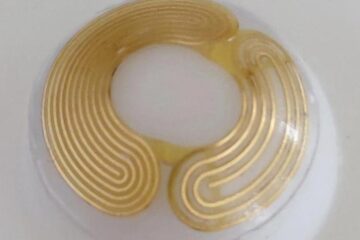Reduced sea ice disturbs balance of greenhouse gases

According to the study, the melting of sea ice in the Arctic has a tangible impact on the balance of greenhouse gases in this region, both in terms of uptake and release. The researchers have studied the greenhouse gases carbon dioxide and methane both in the tundra and in the Arctic Ocean.
“Changes in the balance of greenhouse gases can have major consequences because, globally, plants and the oceans absorb around half of the carbon dioxide that humans release into the air through the use of fossil fuels. If the Arctic component of this buffer changes, so will the amount of greenhouse gases in the atmosphere”, says Dr Frans-Jan Parmentier, a researcher at Lund University, Sweden.
He has carried out the research study together with a number of colleagues both from Lund University and from Denmark, Greenland, Canada and the USA. The researchers observed that a vicious circle is formed when the sea ice melts. Normally, the white ice reflects sunlight, which then bounces out into space, but when the sea-ice cover shrinks, the amount of sunlight reflected is also reduced. Instead, a larger proportion is absorbed by the surface of the ocean, which causes warming that contributes to the rise in air temperatures around the Arctic.
On the one hand, the rising temperatures make vegetation grow more vigorously and therefore more carbon dioxide is taken up, which is a positive effect. On the other hand, the same temperature rise means that more carbon dioxide and methane are released from the soil, which has a strong negative impact on the climate, according to Dr Frans-Jan Parmentier.
In addition to the changes on land, the present study shows that there are a number of uncertainties surrounding the effects of the melting ice on the amount of greenhouse gases exchanged by the ocean through natural processes. Many of these marine processes are poorly understood in this context.
“We know very little about how the shrinking sea ice cover disturbs the balance of greenhouse gases in the sea in the long term”, says Dr Parmentier.
For more information, please contact:
Frans-Jan Parmentier
Department of Physical Geography and Ecosystem Science, Lund University
frans-jan.parmentier@nateko.lu.se
tel. +46 723 37 29 54
Torben R. Christensen
Department of Physical Geography and Ecosystem Science, Lund University
torben.christensen@nateko.lu.se
tel. +46 709 56 37 43
Media Contact
All latest news from the category: Ecology, The Environment and Conservation
This complex theme deals primarily with interactions between organisms and the environmental factors that impact them, but to a greater extent between individual inanimate environmental factors.
innovations-report offers informative reports and articles on topics such as climate protection, landscape conservation, ecological systems, wildlife and nature parks and ecosystem efficiency and balance.
Newest articles

‘Smart’ contact lenses could someday enable wireless glaucoma detection
Most people with early-stage glaucoma don’t know they have it, even though early treatment is key to reducing vision loss. While detecting a subtle increase in eye pressure helps doctors…

New tech may lead to smaller, more powerful wireless devices
Good vibrations… What if your earbuds could do everything your smartphone can do already, except better? What sounds a bit like science fiction may actually not be so far off….

Caution, hot surface!
An international research team from the University of Jena and the Helmholtz Institute Jena are demystifying the mechanisms by which high-intensity laser pulses produce plasma on the surface of solids….





















